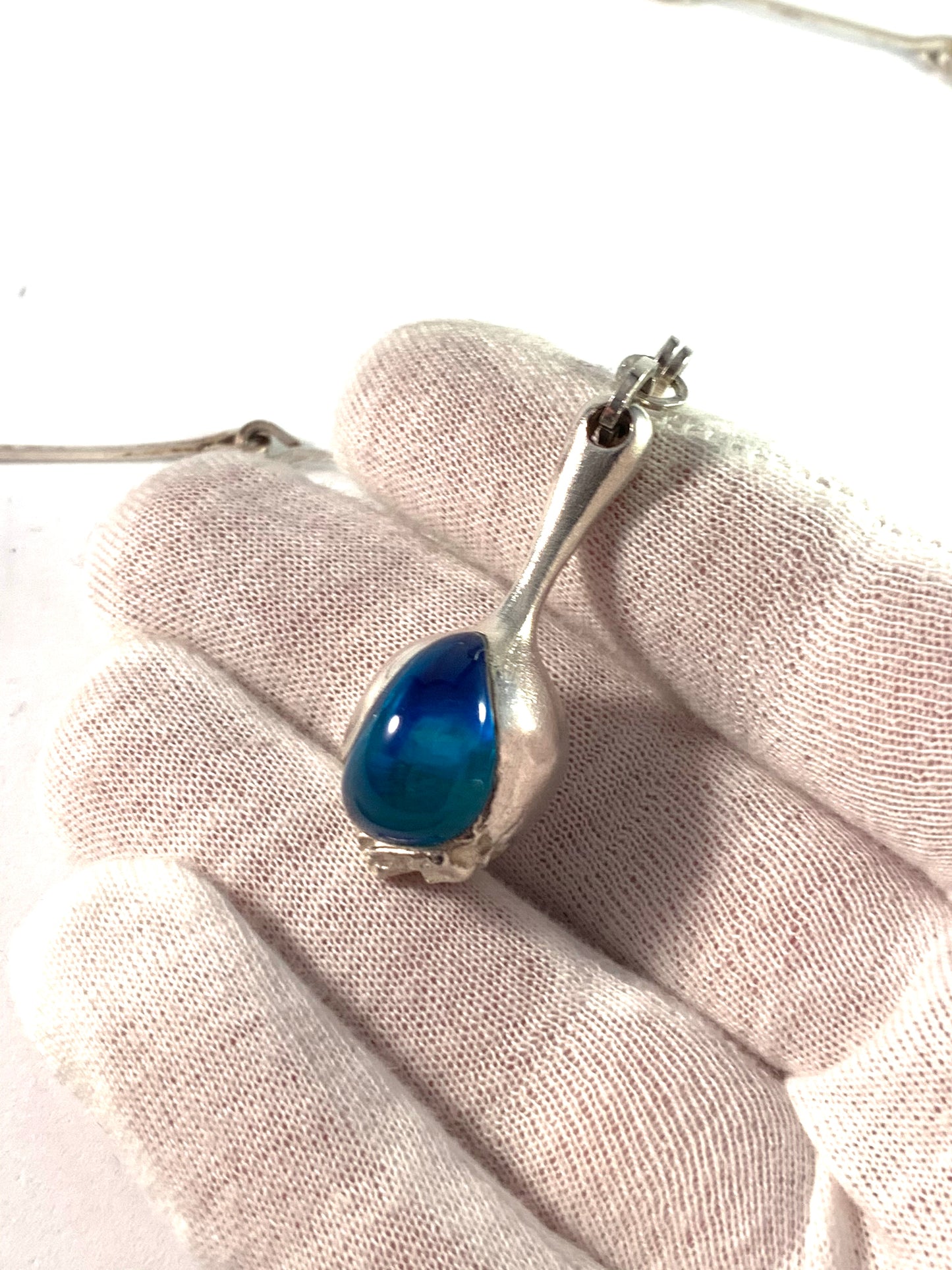Weckström for Lapponia, year 1974 Nectaris Sterling Silver Acrylic Pendant Necklace.
Weckström for Lapponia, year 1974 Nectaris Sterling Silver Acrylic Pendant Necklace.
Couldn't load pickup availability
Stunning and much sought after modernist necklace. Fully hallmarked for designer Björn Weckström for maker Lapponia, Finland year 1974. Design. Nectaris. Sterling silver and acrylic. In original bag.
Excellent condition
Height pendant: 1.85in / 4.7cm
Length chain: 25in / 63cm
Weight: 25.4gram
--
LAPPONIA
In 1960 the Finn Pekka Anttila started the company. He looked for innovations in jewelry making. Pekka was very impressed by the work Björn Weckström, he loved his unique touch in designing. Anttila and Weckström started their cooperation and in 1963 the Lapponia company actually started. Despite that they had much competition, they got quickly consumer confidence. They grew into a full-fledged company that made high quality jewelry.
In 1965 Lapponia Jewelry took part in their first international fair. In the same year Björn Weckström participated in a Contest in Rio de Janeiro and won the Grand Prix for his golden necklace "Flowering wall". The company gained international respect and recognition. They captured steadily the market that more and more appreciated their typical designs.
In 1971 Lapponia launched the Flame Bronze Collection designed by Weckström. In this series were 8 rings, 7 pendants, 3 bracelets and 4 belts. All these were produced just a short period in the 70´s only. Name Flame Bronze came from the special patina surface of the items. The collection has a dark tone and heavy image. The names of jewellery in this collection had clear military overtone like B52, Pentagon, Starfighter and International Arms Inc. to take some examples. Some of the names had connection to automotive industry like Mustang, General Motors, Pontiac 59 and Buick 49. The three bracelets were called Mauser, Krupp and Maginot.
Many well-known designers worked for Lapponia such as: In 1971 Poul Havgaard, Juhani Linnovaara in 1972 (a painter), in 1975 Zoltan Popovits (a sculptor), in 1989 the Frenchman Christophe Burger, in 2002 the designer Pekka Hirvonen and Chao-Hsien Kuo in 2006.
In 1972 Pekka Anttila received the National Entrepreneurs Prize for his special contribution to the Finnish jewellery industry. In 1979 Lapponia's efforts in the export markets was awarded with the -The President of Finland Award for Export."
Björn Weckström is one of Scandinavia’s best known jewelry designers. In 1956 he graduated as a trained goldsmith, and soon after he opened his own studio in Helsinki. Combining his yearning to be a sculptor with his trade, he immediately started making modernist jewelry with characteristic angular shapes and matte surfaces. In 1961 he participated in a large exhibition of modern jewelry design at Goldsmith’s Hall in London, which catapulted him into both domestic and international fame.
In 1963 he joined Pekka Antilla to start Lapponia Jewelry, expanding the production and reach of his designs. This became clear as he won the Scandinavian design award the Lunning Prize in New York City in 1968. Drawing inspiration from his trip to the United States, Weckström designed a series called “Space Silver”. The series includes some 50 designs with themes as diverse as space, nature, and Greek mythology. Often incorporating people in silver in his pieces, the Space-series express an unprecedented sculptural and alluring quality in jewelry. Continuing this successful merging of beauty and intrigue, Weckström went on to create a series of jewelry serving as a commentary to the weapons manufacturing industry at the time. Made in color-patinated bronze with names such as “Daytona”, “Bethlehem Steel” and “General Motors”, the series reflects the inherent qualities of Weckström’s designs: thought-provoking, yet art in its own right.
In the early 1970s, Weckström started incorporating acrylic resin into his silver jewelry. Despite the outrage from conservative forces in jewelry making, these objects are some of his most beautiful and expressive to date. The mixing of materials in Weckström’s jewelry serves as an extension of the contradictions in life and art: a rough finish meets soft angles and plastic meets silver.
At this point, Lapponia had become so successful that in 1976, Björn Weckström was contacted by George Lucas to provide “statement jewelry” for his new, unnamed, film. Even though Weckström had no idea who George Lucas was, he accepted the work. However, due to time constrictions it was impossible to finish any new designs, and Lucas decided to have Carrie Fisher wear two existing designs, “Planetoid Valleys” and “Darina’s Bracelet” for the final scene of the movie. The use of Weckström’s designs in Star Wars further spread the word about his jewelry, and Weckstöm was pleased to see the result on the screen in 1977.
Today Björn Weckström lives in Italy, where he works mostly with sculpture. Still, the Finnish nature serves as a constant inspiration with ice, snow, and glaciers serving as themes today as well as in the 1960s.
Share












